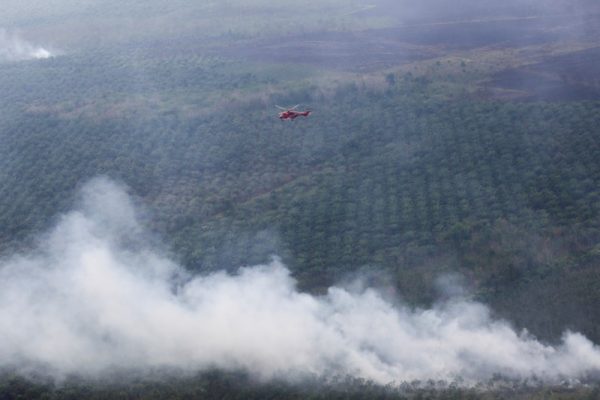Despite its own emissions profile, Norway plays an important role in assisting tropical countries like Indonesia to reduce forest loss and degradation.
In the lead up to the COP27 summit in September 2022, the governments of Indonesia and Norway entered into a renewed bilateral partnership on forests and climate. The 2022 agreement superseded the 2010 Indonesia–Norway agreement on reducing emissions from deforestation and forest degradation (REDD+), which Indonesia terminated in September 2021 amid disagreements on achievements and slow progress in the release of results-based payments for emissions reductions.
Given this earlier falling out amid a shortfall in international climate change financing commitments and escalating climate change impacts, the ambitions and success of these two aspiring climate champions matter.
The new funding pact differs from the previous agreement in a number of ways. First, Norway pledged up to US$1 billion in the first Memorandum of Understanding (MOU), but there is no set commitment this time around. Second, the new MOU has a clear time frame of five years. These changes suggest that both parties are approaching the partnership more cautiously.
Third, the different approaches in the two MOUs reflect the different contexts in which they were developed and signed. The previous MOU was signed in a period where schemes for emissions reductions from forests and land use were only emerging, countries were only starting to develop relevant institutions and instruments and climate finance architecture was in its infancy. The earlier MOU was designed to assist Indonesia in developing REDD+ institutions and instruments, was more prescriptive and ambitious in nature and, in hindsight, did not contain adequate recognition of Indonesia’s domestic governance, political dynamics, nationalistic stance or the multiple challenges in realising REDD+ ambitions.
In contrast, the new MOU was signed under more developed institutional structures, including the newly established Indonesian Environment Fund and with the first Forest Reference Emissions Level for REDD+ in place to be used as a benchmark for emissions reduction. This has led to greater clarity in the partnership’s objectives and scope. The new MOU also benefits from a shared understanding of domestic sociopolitical and governance dynamics, a key lesson learnt from the previous partnership.
The new MOU aims to support Indonesia’s Forest and Land Use (FOLU) Net Sink 2030 Operational Plan by rewarding Indonesia’s emissions efforts under FOLU through results-based payments. In 2022, Indonesia strengthened its 2030 emissions reduction target to 31.89 per cent and 43.2 per cent with and without international support respectively compared to business-as-usual levels.
The new MOU is based on more realistic expectations, with its implementation governed by Indonesia’s institutions and regulatory frameworks. Results-based contributions are being channelled to the Indonesian Environment Fund managed by the Ministry of Finance. The allocation, disbursement and use of these funds will adhere to national systems, standards, protocols and instruments.
Norway has already made payments of US$56 million based on verified third-party emissions reductions in 2016 and 2017, and is committed to contributing for a portion of national-level and third-party verified reductions for the 2017–18 period through to 2019–20 and beyond. Monies from the Green Climate Fund, the World Bank and the Ford Foundation have also flowed into the Indonesian Environment Fund, reflecting the degree of trust in its operations despite its yet to be proven track record.
While some remain concerned about Indonesia’s underlying deforestation rate and discrepancies between deforestation estimates from different sources, the key issue for this new partnership appears to be less about delivery of payments and more about the allocation of funds.
Although it is focused on results-based payments, the MOU also allows for opportunities for broader engagement. In particular, the partnership may explore creative and innovative collaborations on climate adaptation, consistent with the emphasis of the latest report from the Intergovernmental Panel on Climate Change, which emphasises the urgency of bridging the gap between mitigation and adaptation efforts. To date, only 25 per cent of global climate finance has been allocated for adaptation initiatives, with the United Nations calling for an increase in the total share of spending dedicated to adaptation and resilience.
The new partnership has the potential to jointly address adaptation and mitigation efforts. Many of the practices under Indonesia’s FOLU plan — such as agroforestry, sustainable forest management, social forestry and other ecosystem-based restoration efforts — offer both adaptation and mitigation benefits that could be scaled up.
The new Indonesia–Norway partnership seems more promising than its predecessor and represents a welcome move forward in support of the Indonesian FOLU plan. But Norway’s results-based payments are only a drop in the bucket compared to the funding required to achieve Indonesia’s emissions reductions target. Nevertheless, the partnership should open the door for more targeted, creative and promising approaches to climate assistance.
Ida Aju Pradnja Resosudarmo is a Research Fellow in the Fenner School of Environment and Society, The Australian National University.
Rini Astuti is a Research Fellow at the Australian National Centre for the Public Awareness of Science, The Australian National University.
Peter Kanowski is Professor of Forestry in the Fenner School of Environment and Society, The Australian National University.

